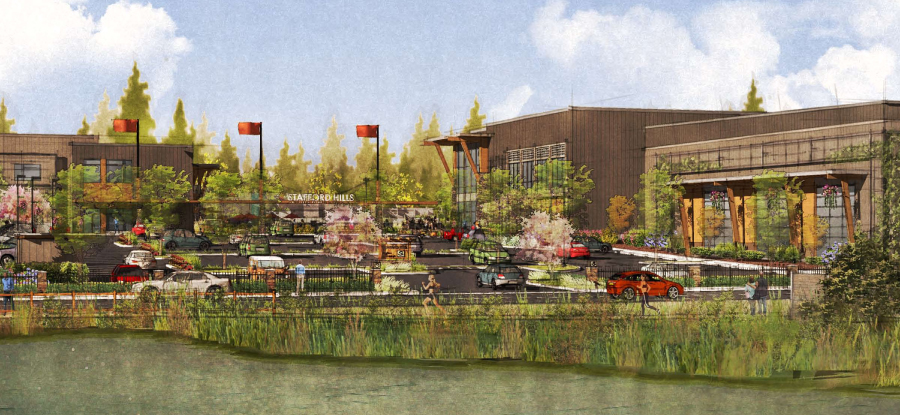
Stafford Hills Racquet and Fitness Club in Tualatin, Ore. is setting a new standard for ecologically-sustainable fitness. In the process of being built upon 16 acres of wetlands, the 90,000-square-foot facility is not only protecting the wetlands, but restoring them. Set to open in November 2012, Stafford Hills is working towards a Leadership in Energy and Environmental Design (LEED) certification — an official stamp of “green” approval in the U.S, distributed by the U.S. Green Building Council.
According to Maggie Creps, the director of project management for Stafford Hills Racquet and Fitness Club, residents of Oregon are extremely green-oriented, which Creps anticipates will be part of the club’s allure to its surrounding community. “We’re a very green state, literally, and we have very ‘green’ tendencies when it comes to the environment,” she said.
To keep those tendencies in mind, Stafford Hills has worked hard to meet the extensive requirements needed to gain a LEED certification. This includes installing solar panels that heat the pool and constructing a building made entirely from sustainable products. “Every piece of the process will get touched by the LEED certification,” said Creps. This includes the restoration and preservation of the wetlands in which Stafford Hills is being built upon. At the project’s completion, the functional areas of the wetlands will have doubled in size, created a new waterfowl habitat, and the overall health of the environment will have improved.
In addition to improving the quality of the wetlands, Stafford Hills plans on incorporating them into the building’s design and the overall club experience. Large windows with high ceilings will overlook the wetlands, and when weather permits, yoga classes will be held outside. Plans are also in place to install walking trails throughout the wetlands for members to use. “The wetlands are under the umbrella of looking at a lifestyle club, and tying the outdoors into that is critical,” said Jeff Breit, the general manager of Stafford Hills Racquet and Tennis Club. “People who enjoy the outdoors are healthier people. It’s part of their well-being.”
According to Breit, Stafford Hills is more than just a fitness facility alone. The club will work as a wellness facility, incorporating holistic health into its approach. The club will boast a variety of wellness services including nutritional coaching, therapeutic massage, stress management and wellness workshops, in addition to its many fitness options. “This is a much bigger and broader perspective on how people can enhance their well-being, than by just providing them with treadmills,” he said. “It’s very much a lifestyle club indicative of people who want to live a good-quality life.”
If the requirements to attain a LEED certification are met, Stafford Hills Racquet and Tennis Club will be one of the first facilities to do so in the Pacific Northwest. “We’re well on track to doing so,” said Breit. To learn about the requirements needed to receive a LEED certification in your state, visit the U.S. Green Building Council’s website at www.usgbc.org/.
By Rachel Zabonick
Stay ahead in the fitness industry with exclusive updates!
Rachel Zabonick-Chonko is the editor-in-chief of Club Solutions Magazine. She can be reached at rachel@peakemedia.com.












What you don’t see are the nice neighborhood houses on a hill behind the club that once had a gorgeous view of the park, but now only see the back of the building where concrete pavings and dumpsters are housed.